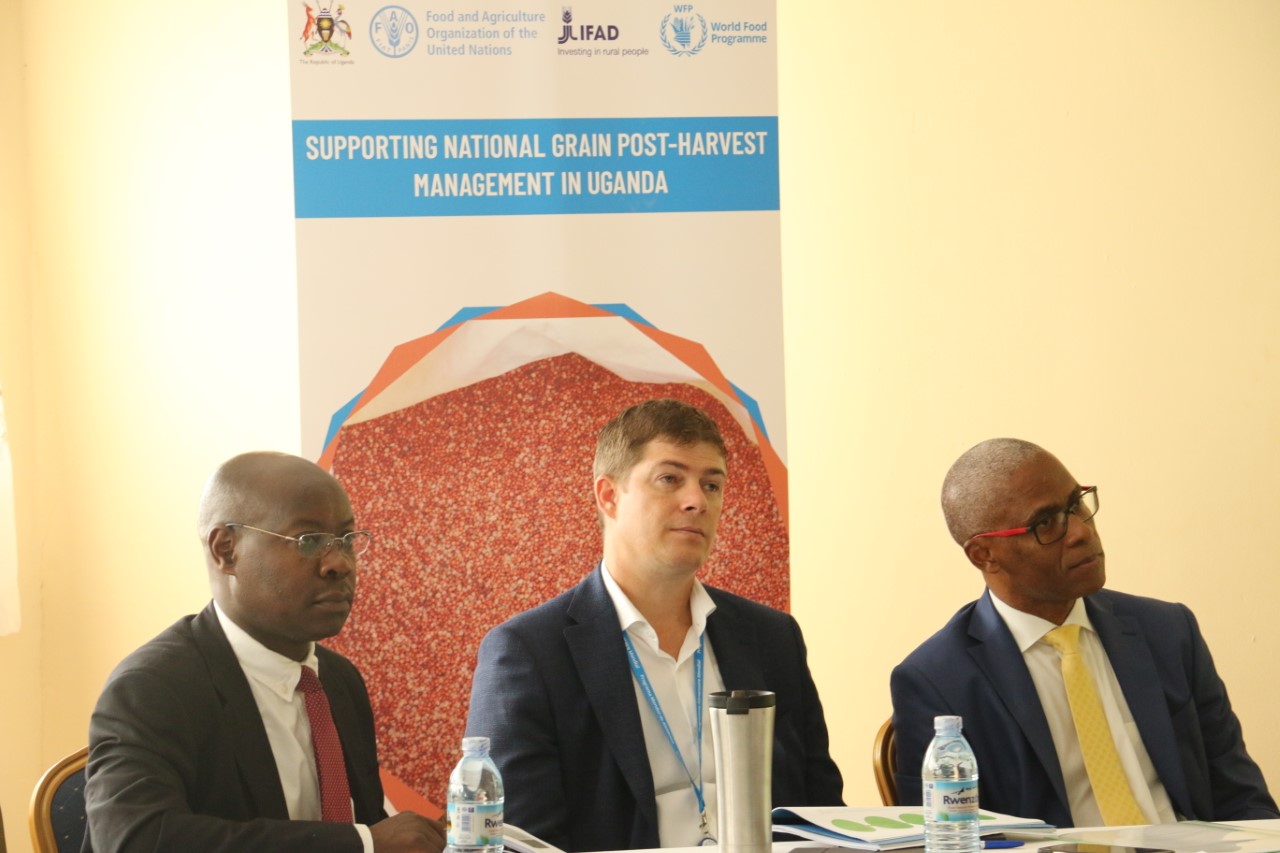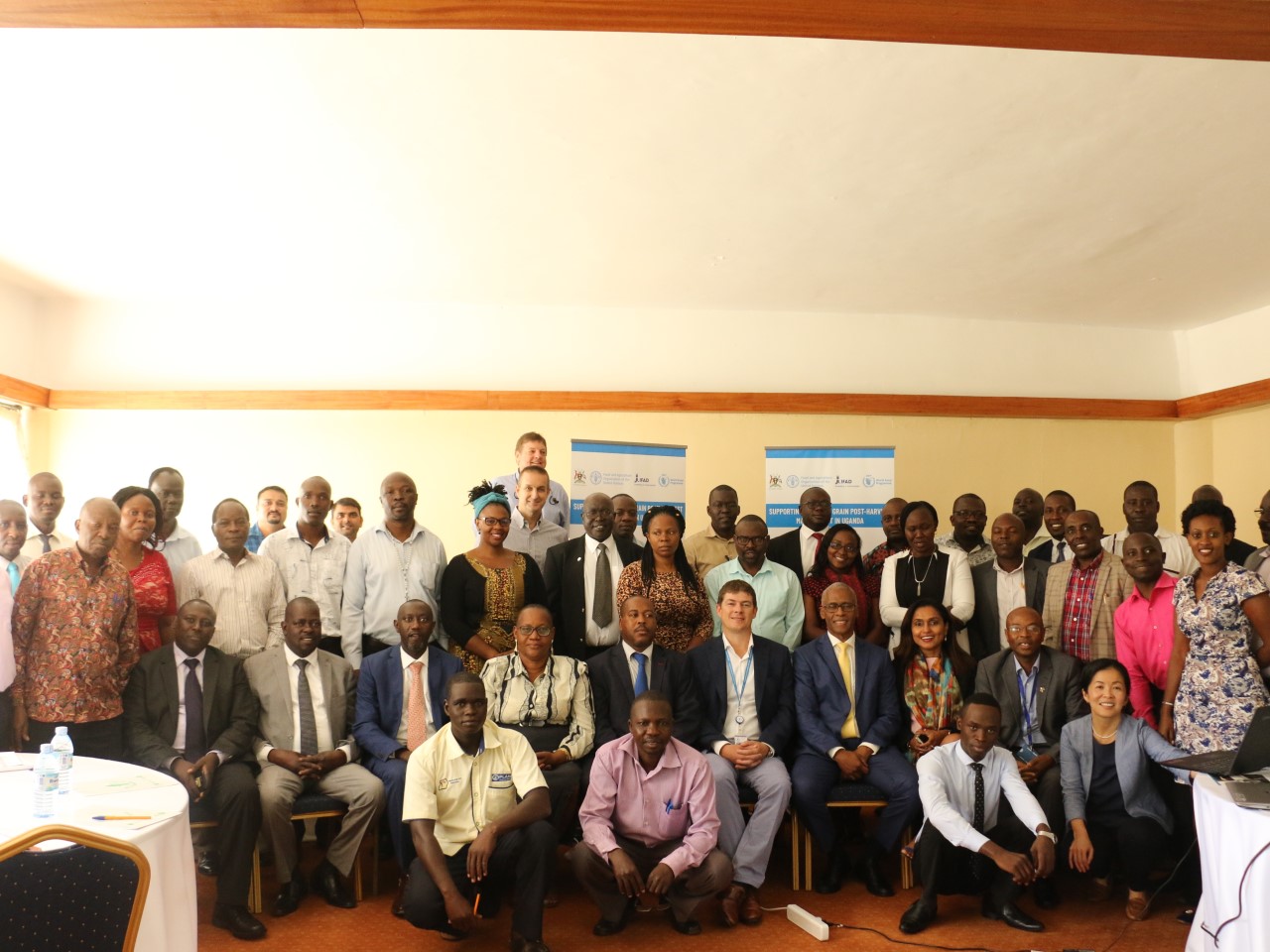
KAMPALA – Ministry of Agriculture Animal Industry and Fisheries (MAAIF) and Food & Agriculture Organization (FAO), have on Thursday, May 30, ascribed the reduced agricultural sector performance reported on the post-harvest losses which they say have reduced grain.
This was during the national consultation meeting on the grain post-harvest loss reduction strategy at Protea Hotel in Kampala which provided a platform to share views and concessions to be taken into account.
The ministry and FAO, teamed up with World Food Programme (WFP), International Fund for Agriculture Development (IFAD) to drive this action plan to improve on food security and the contribution of the agriculture sector to the national economy.
FAO Country Director, Antonio Querido, speaking at the occasion revealed that food losses were largely caused by inefficiencies in the food supply and value chain.
“This is mainly due to lack of knowledge on best practices, poor technologies or limited access to equipment, inadequate post-harvest infrastructure and limited linkages amongst value chain actors,” Mr. Querido said.
According to UBOS 2017, in Uganda, agriculture employs about 72% of the population and consequently contributing to a meagre 23% of GDP.
The sector also experiences the stunted growth rating at 2.5% in comparison with industry (4.7%) and services at 6.35% (UBOS, 2017)

MAAIF attributed to the poor handling during post-harvest resulting in heavy losses across the grain value chain thus degrading the quality of grain and, subsequently, the market value of the produce.
Pius Wakabi Kasajja the Permanent Secretary MAAIF noted that Post-harvest loss has become a huge issue and so the Ministry has come up with plans on reducing this.
“The post-harvest loss is bi-sectoral now. We are going to sensitize farmers on post-harvest management,” he said.
Mr Kasajja added that the government is moving to acquire of Post-harvest storage facilities which will see a reduction in grain loss.
Prof. Augustus Nuwagaba, an Economic Transformation consultant said farmers and other value chain actors lose both in terms of quality and quantity of the grains and grain products.
“This compromises the country’s ability to market her produce especially in the regional and international markets where quality is paramount,” Prof Nuwagaba added.
Post-harvest loss in Uganda according to Aphlis 2017, currently stands at 17.6% for maize, 12.4% for millet and 13.5% for rice.
Therefore MAAIF and partners passed a strategy focusing on improved post-harvest handling of grains and grain products and ultimately to reduce the loses across the grain value chains.
Prof Nuwagaba added that the strategy involves increasing general awareness to trigger mindset change towards this drive and enhancing the knowledge and skills of post-harvest loss.
In the same plan, there is increasing availability, accessibility, adoption and utilization of appropriate and improved grain post-harvest and quality enhancing technologies by value chain actors.
In addition to that, the drive looks at strengthening coordination and collaboration for efficient implementation of these strategic actions.
Antonio Querido noted that this was formulated after consultations and relevant studies with key stakeholders at national and district level where about 40 districts have been engaged.
This drive will see MAAIF and partners working together with the Ministry of trade and Uganda National Bureau of standards which will enforce standards
Local governments, private sectors, civil society organizations, and other stakeholders will support the implementation of these strategic plans.
“I reiterate the commitment of FAO, WFP, and IFAD to collaborating with the Government of Uganda and all stakeholders towards finalization and implementation of the strategy,” said the FAO country director.




